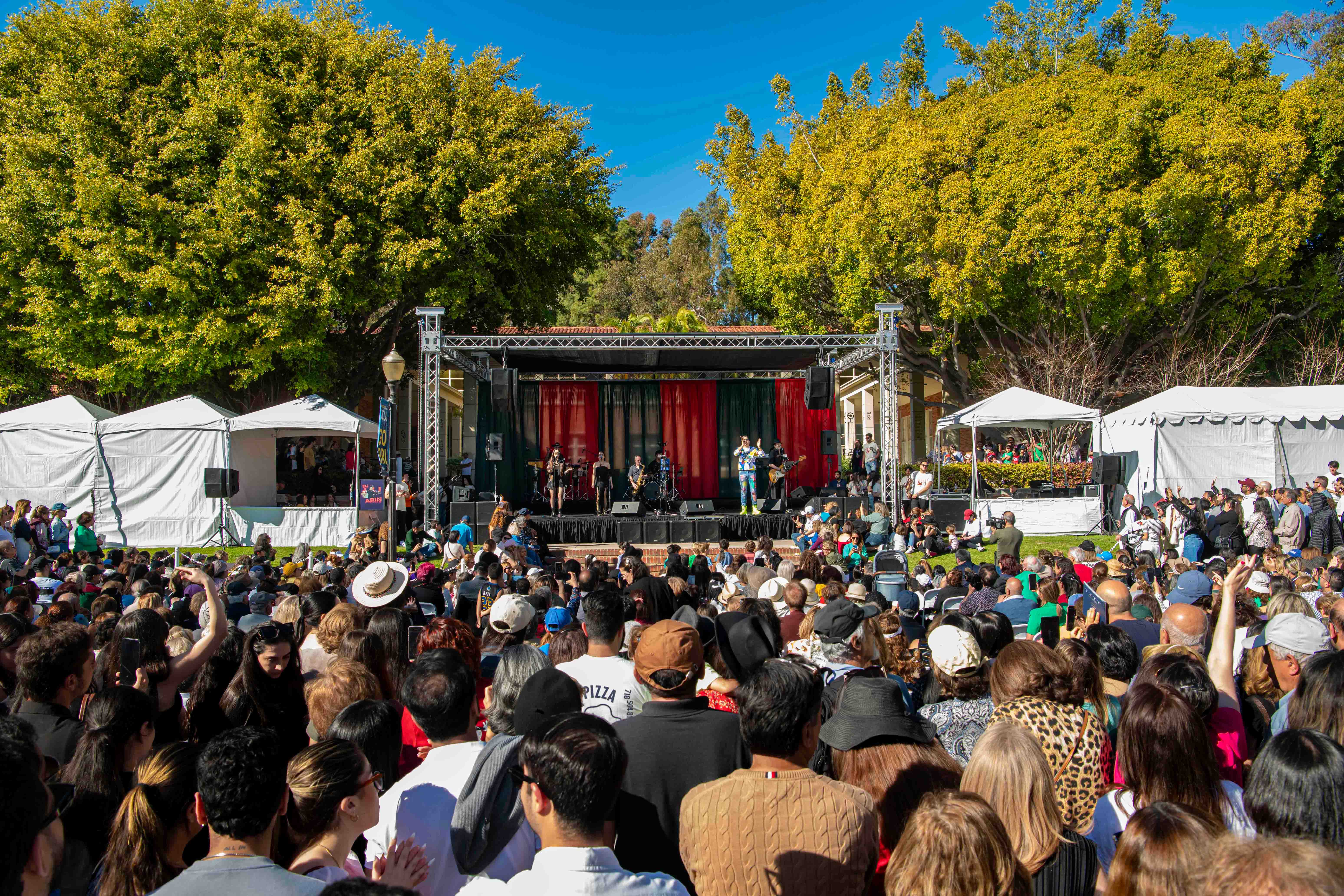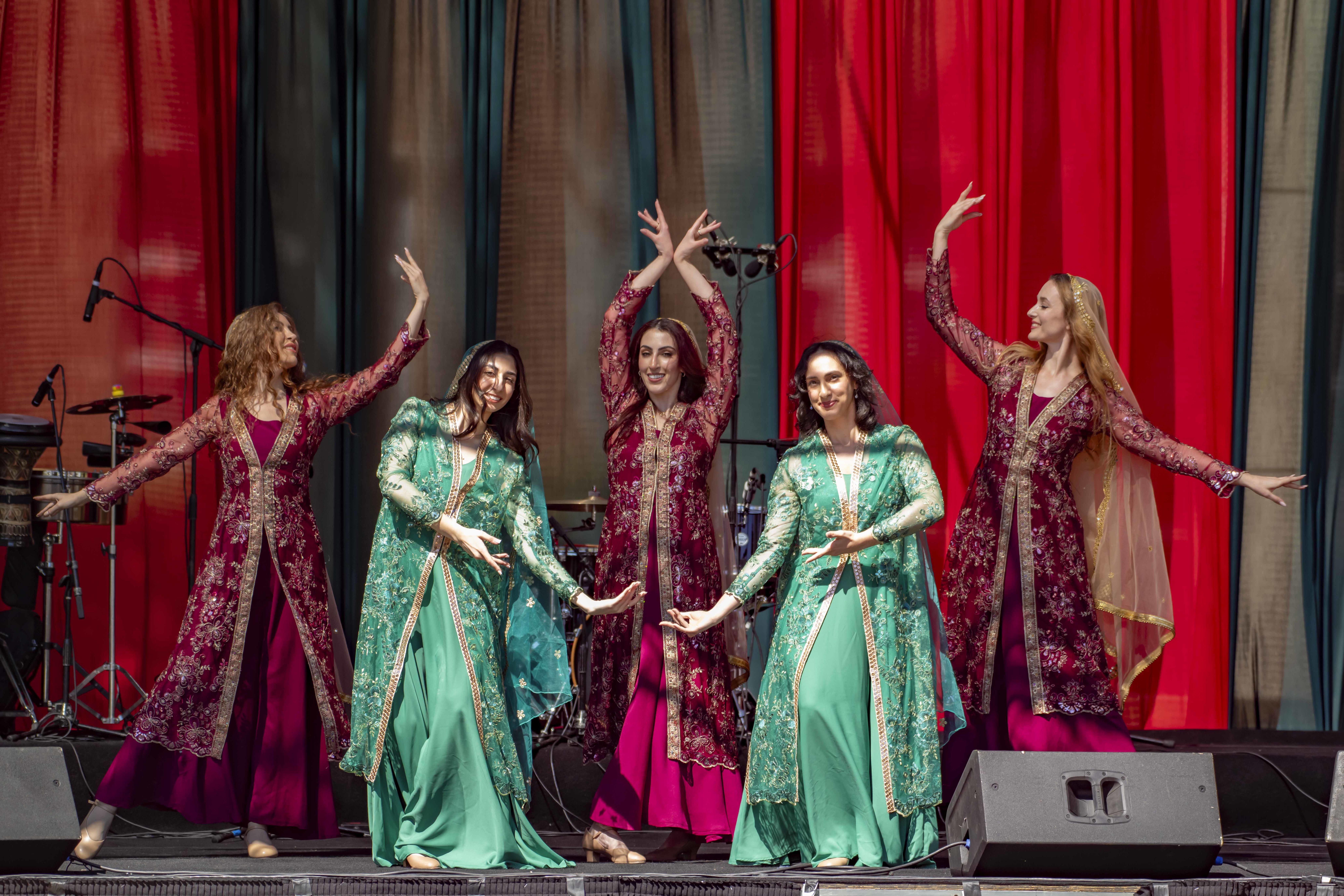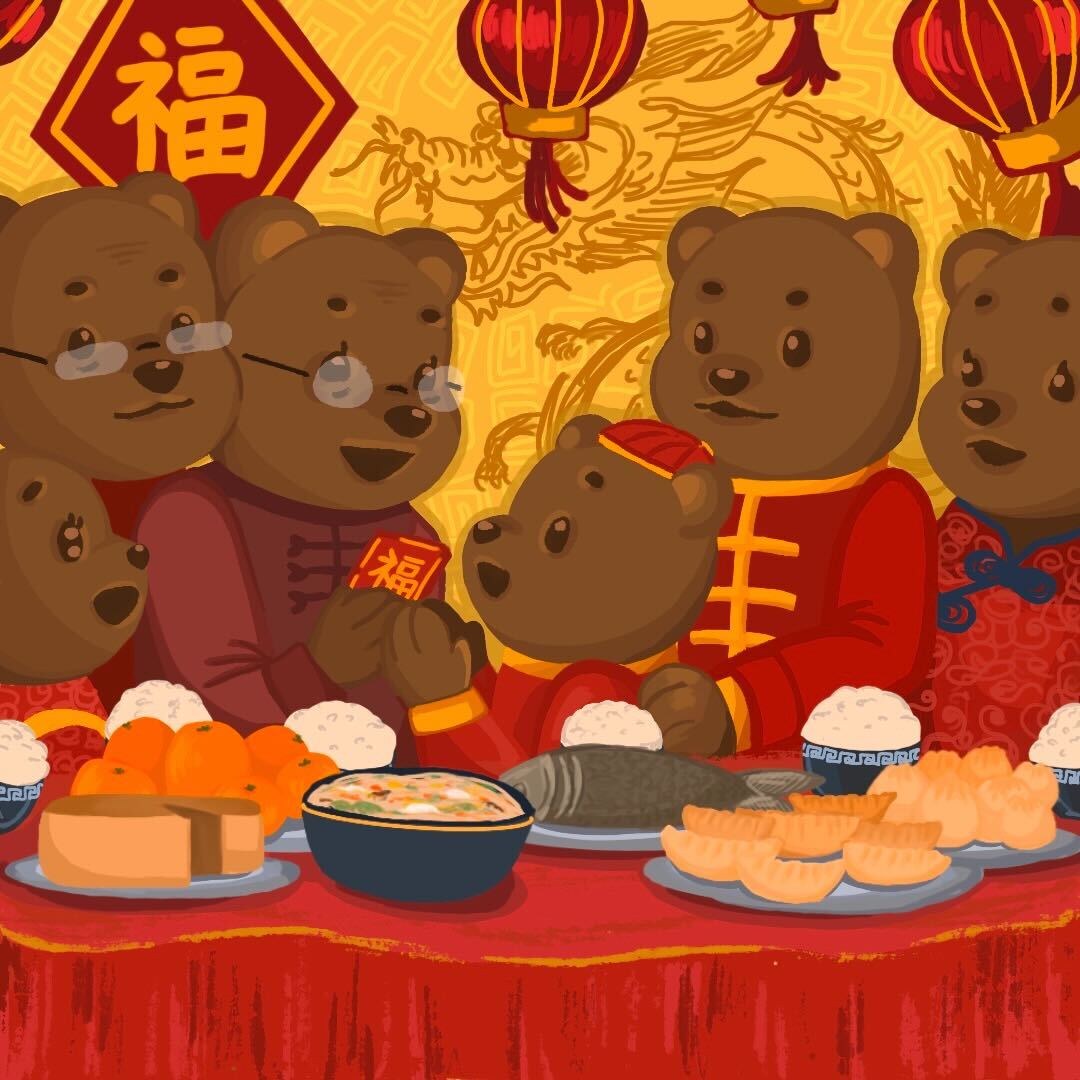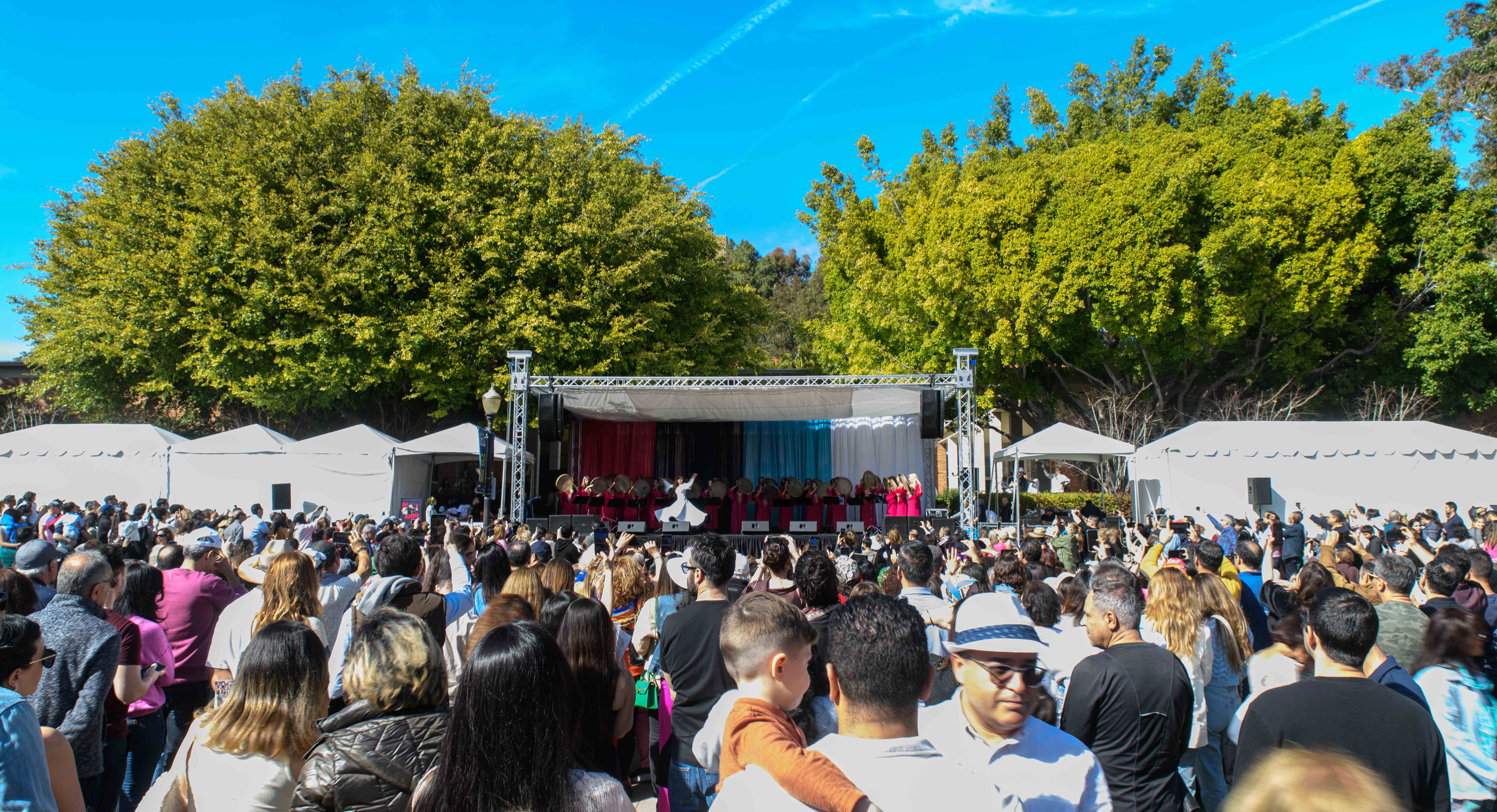From Rosh Hashanah to Nowruz, Bruins celebrate new years across various cultures

Student gather at Dickson Court to celebrate Nowruz festival. (Courtesy of Alireza Ardekani)
By Senai Wilks
April 2, 2025 2:25 p.m.
This post was updated April 3rd at 9:18 p.m.
Jan. 1 is not the only day Bruins celebrate the new year.
Lunar New Year, Rosh Hashanah and Nowruz are holidays celebrating the start of various calendar years that differ from the Gregorian calendar used in the United States. Across these disparate celebrations, each community is united through their honoring of new beginnings.
Prior to moving to the U.S. almost 40 years ago, Asian American studies and sociology professor Min Zhou said she celebrated the Lunar New Year with her family in southern China through traditions such as thoroughly cleaning their home, watching dragon dance troupes or lighting firecrackers to ward off bad spirits.
“There are a lot of superstitious stuff there, too. But all (traditions) imply good wishes, so you wish that the following year is filled with happiness, health and prosperity,” Zhou said.
Lunar New Year took place Jan. 29 this year and is determined by the lunar calendar. Unlike the Gregorian calendar that is based on Earth’s orbit around the sun, the lunar calendar is based on the monthly cycles of the moon’s phases, Zhou said.
The holiday is celebrated across East and Southeast Asia in countries such as China, Korea and Vietnam, but its customs and traditions differ based on geographic location. For example, Zhou said even within the same country, Chinese northerners and southerners celebrate the holiday in different ways. Those from the north will typically eat dumplings, whereas those from the south eat sesame balls, Zhou added.
Nearly 8.5 million Chinese, Japanese, Korean and Vietnamese Americans in the U.S. celebrated the Lunar New Year, according to a 2019 U.S. Census Bureau report. UCLA hosts a Lunar New Year festival featuring a Lion Dance performance, as well as traditional arts and crafts activities for students to partake in.
Within the Jewish community, the new year is celebrated differently through Rosh Hashanah, which takes place Sept. 22 to 24 this year. The holiday occurs on the first day of Tishrei, or the first month of the year on the Hebrew calendar. The Hebrew calendar combines aspects from both the lunar and solar cycles, according to Chabad at UCLA.
Rosh Hashanah’s festivities begin with the blowing of the shofar, or ram’s horn, that announces the onset of the spiritual introspection, which culminates 10 days later on Yom Kippur when Jews atone for their sins. Community members will also eat apples dipped in honey and a braided bread called challah – foods which represent the expectation of a sweet and whole year, Jewish history professor David Myers said.
According to a Brandeis University study, Los Angeles is home to the second-largest federated Jewish community in the U.S. Myers said he notices his community slow down during the holiday, especially in his predominantly Jewish neighborhood located five miles southeast of campus.
“People are not rushing to get to work. They’re not getting into their cars. They’re not checking their phones every 15 seconds. It’s a different rhythm and that’s something to behold,” Myers said.
Myers added that he celebrates Rosh Hashanah by abstaining from work and electronics for the two-day span of the holiday and spending quality time with friends and family over food. He said he values the designated time that Rosh Hashanah provides him to consider his obligations to God and to other people.

While Rosh Hashanah occurs in the fall, Nowruz – also known as the Persian New Year – takes place every year on the spring equinox, which falls on Mar. 20 this year.
Ryan Javanmard, a fourth-year human biology and society major and president of the Iranian Student Group at UCLA, said he always begins celebrating Nowruz on the Tuesday prior to the spring equinox by jumping over fire to cleanse and prepare his body and soul for the new year.
“We get together with our families, and it doesn’t matter if it’s a bonfire or a candle, but I try to celebrate this no matter where I am, even if it’s in my room,” Javanmard said.
The traditions continue with spending time outside with family, creating a scavenger hunt with painted eggs and making a haft seen – a table arrangement with seven objects, which represent values to bring into the new year. The haft seen objects all start with the letter “sin” in Farsi and include items such as an apple representing beauty, vinegar representing patience and coins representing prosperity, according to NPR.
For nearly a decade, Javanmard has attended UCLA’s annual Nowruz festival in collaboration with the Iranian nonprofit Farhang Foundation on campus. The day-long celebration is typically broken into two parts: an outdoor festival at Dickson Court and a concert at Royce Hall. The festival includes puppet shows, dance performances and a calligraphy station, while the Iranshahr Orchestra performs the concert in partnership with the Herb Alpert School of Music.
Farhang Foundation CEO Alireza Ardekani said UCLA is the perfect place for celebrations because of the large population of Iranian Americans in Westwood. According to a 2020 U.S. Census Bureau report, LA County had the largest population of Iranians in the U.S.
“Nowruz celebration is to bring joy and happiness and celebrate … the beauty in nature and renewal to the entire world,” Ardekani said. “We want to be inclusive and welcome everyone to the celebration because everyone can celebrate Mother Nature, everyone can celebrate the first day of spring.”
The large number of diverse ethnic and cultural communities in LA and on campus allows for colorful celebrations no matter the time of year. Even though Nowruz, Lunar New Year and Rosh Hashanah carry distinct meanings and occur at different times of the year, these holidays are united through the importance of ringing in the new year with community – which Javanmard said is his favorite part.
“It’s all about looking towards something positive for the new year and being with friends and family and people who are close to you,” Javanmard said. “It’s really the happiest time of year for me.”





